The third day in Berlin was the worst of all. It started with us leaving our hotel in Berlin to relocate to Beelitz Heilstätten where we were to meet the rest of the group and move into an apartment that would serve as our home base for the following two and a half days. As usual, we left right after breakfast and got stuck in Berlin's traffic. Anybody see a pattern here?
But, we were not the only ones who had problems getting there, everybody else was late as well for various reasons. We even happened to be the first to arrive, so we waited. And waited. Until the first half of the day was over without doing any exploring. But after finally everybody had arrived we made our plans. One half of the group would spend the second half of the day visiting some locations in Berlin. I decided to join this group.
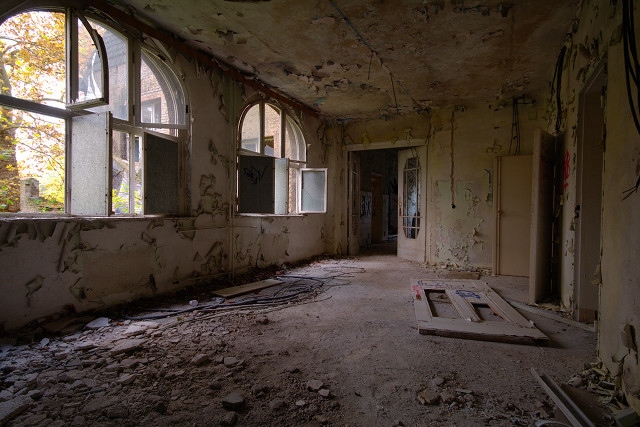
Empty and Trashed
Driving into Berlin turned out to be just as difficult as it had been driving out of the city earlier. Combined with some technical problems with the car, we made it in 3 hours. It should have taken less than 45 minutes. First location was a children hospital that was quite empty and trashed. We also ran out of daylight so i didn't produce many pictures there.
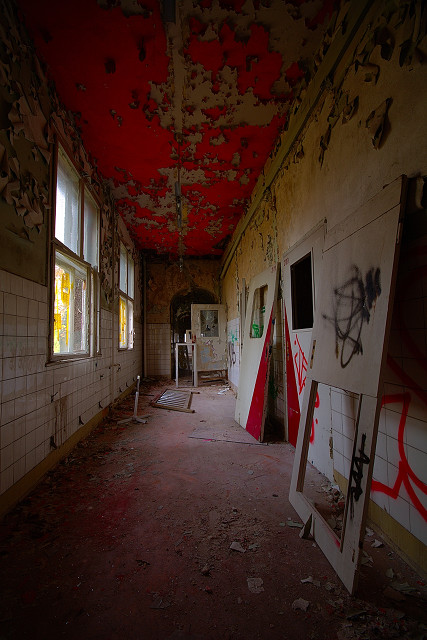
The Red Corridor
Next on the list were two more locations, but they ended up consuming a lot of time without resulting in anything of interest. We drove home and went to sleep which marked the end of Day 3.
But it will not be the end of this post. The next day was so full of crazy and great stuff that i'll take the least interesting of it and pretend it happened on day 3. Time is relative after all.
Since we were already sleeping in Beelitz Heilstätten, we also walked around a bit and explored the area. The huge hospital complex was built in the late 19th and early 20th century. During the war it was used as a military hospital and later taken over by the Red Army, who also used it as a military hospital.
After the Russians left, the place was empty for a long time. During the last few years it has become one of the most well known abandonments in Germany. Because of the beautiful architecture and the big amount of buildings that are placed everywhere throughout the forest, a lot of films have been produced here and it continues to be a popular background for photoshoots.
Visiting Beelitz on a Saturday with good weather can be really tough. There are people walking around everywhere, most of them with cameras. If you want to take a picture of an empty corridor, it should be empty. So you have to wait for a tourist couple to walk out of your field of view. And then you have to wait again because they decided to walk back around.
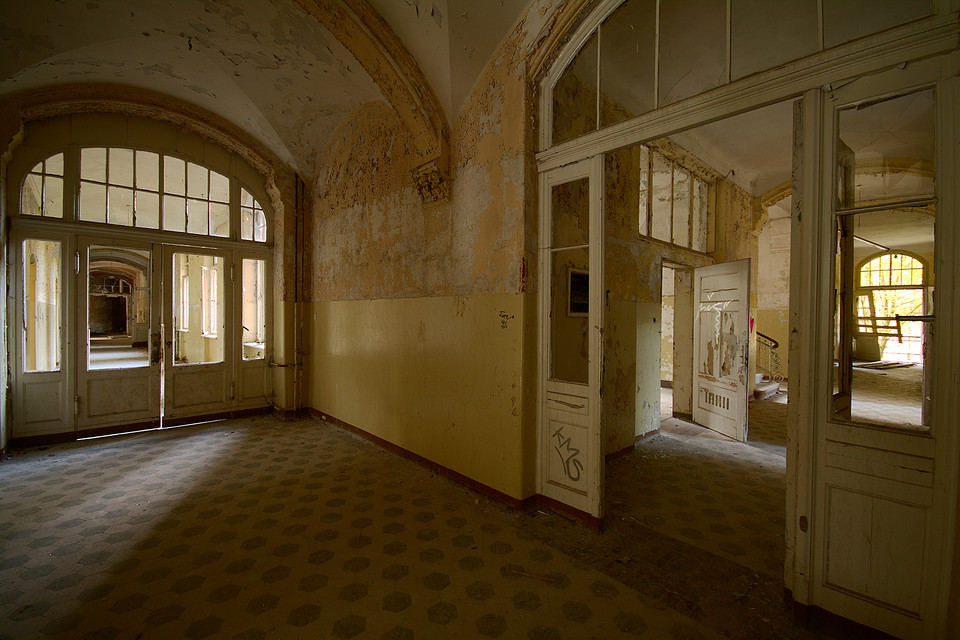
Intersection of empty corridors
But tourist couples are not the only people walking around there. There is also a small army of amateur but wannabe professional photographers doing band- or modelshoots. They can be recognized because they occupy all the stairways and yell loud commands to their models. And of course, they get really pissed if you go and use the stairs for their original purpose to walk up or down.
The third type of people around there are the kids. They are busy all over the place using red-eye reduction flash to take pictures of the walls or point-and-shoot-ing at virtually everything. And of course the self portraits. The fat kid in over-sized clothes who sits down in the auditorium and poses "westside" into the camera. Or the black haired and dressed girl standing in corridors staring at the floor. Can you guess who belongs to which sub-"culture"?
And of course urban explorers like us. Dragging around heavy tripods and huge camera bags just to take another HDR picture of peeling paint, lonely chairs or that surgery lamp.
More images in the Gallery:
Beelitz Heilstätten
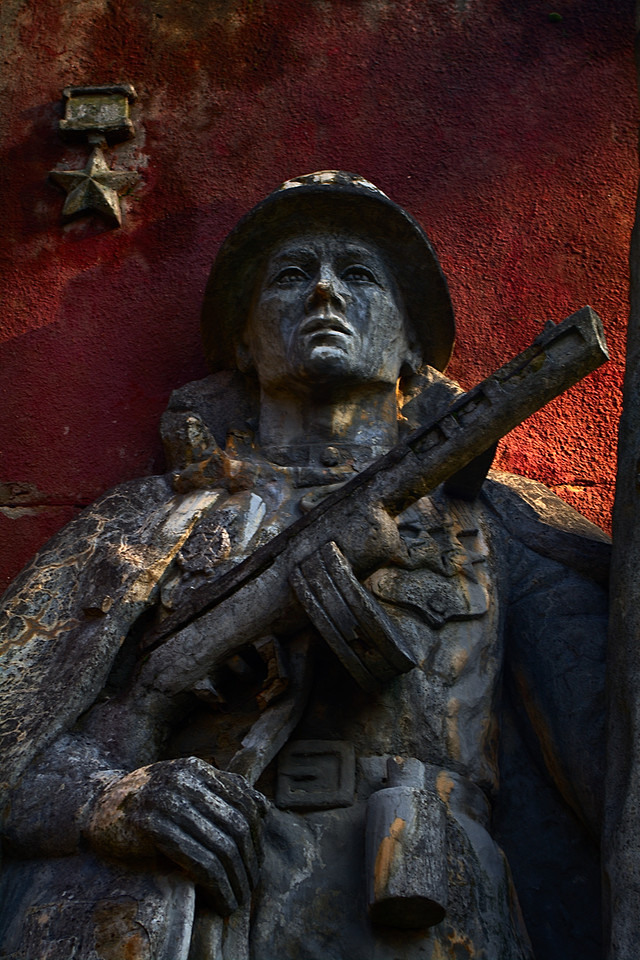
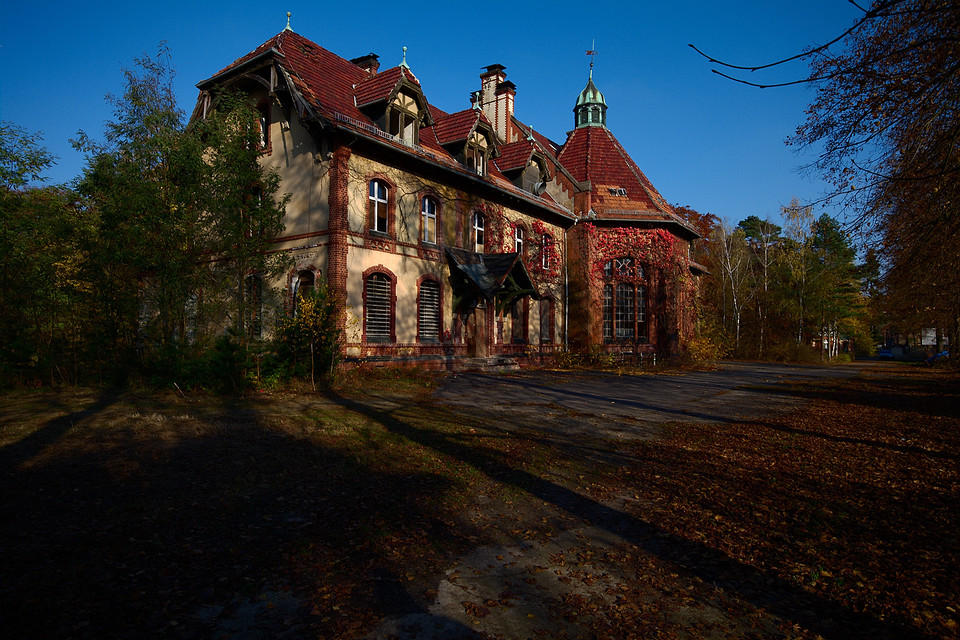

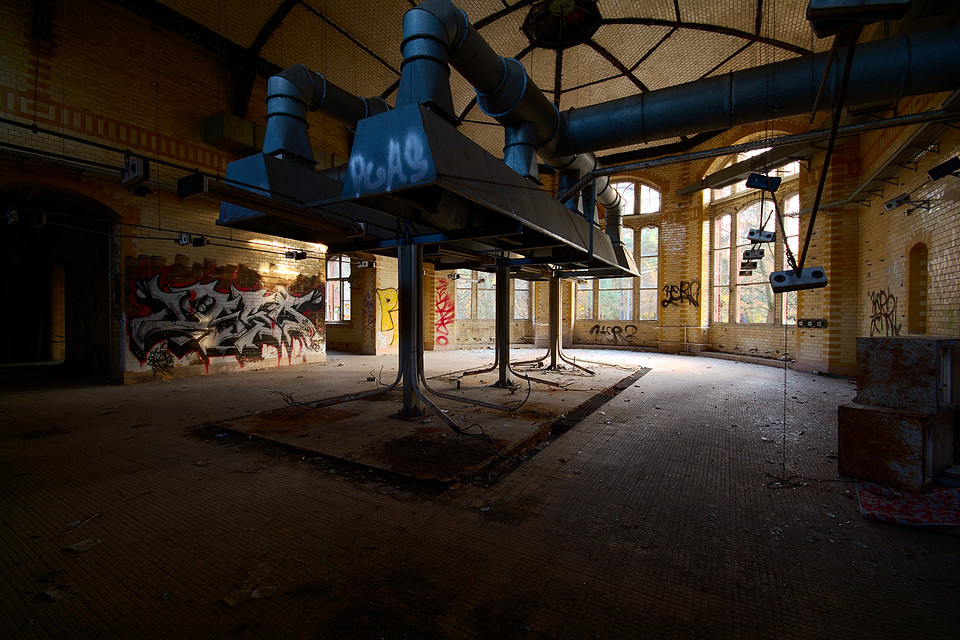
I used a whole day there and did not reach over all the buildings. The buildings open to public was very trashed and as you said, there were a lot of people there... Families with children, babies and dogs walking around on the broken glass... Strange.
But the bath and the mens sanatorium were in much better condition. Didn't meet a lot of people either since the buildings were not officially legal to enter.